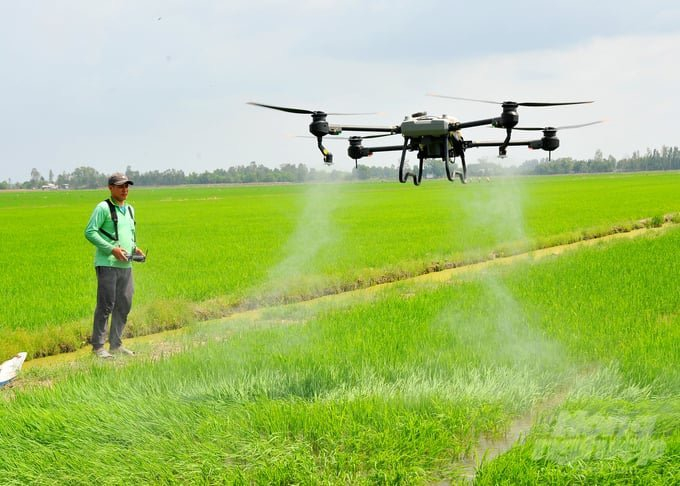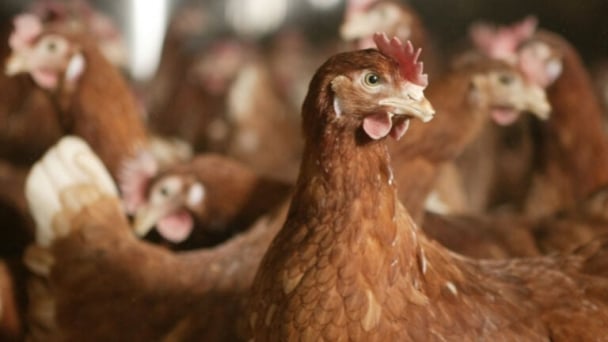June 25, 2025 | 17:04 GMT +7
June 25, 2025 | 17:04 GMT +7
Hotline: 0913.378.918
June 25, 2025 | 17:04 GMT +7
Hotline: 0913.378.918
Amidst the increasing impacts of climate change, Vietnam's rice sector faces numerous opportunities and challenges for sustainable development.
In 2023, the Vietnamese Government officially approved the “One million hectares program specializing in high-quality, low-emission rice production.” This project not only demonstrates the strong commitment of the entire rice sector to environmental and social responsibility, but also opens opportunities for Vietnam's rice sector to participate in the international carbon market.
Therefore, high-quality carbon reduction plans need to be comprehensive and rigorous at every stage, meaning reducing emissions throughout the entire production chain.
Vietnam Agriculture News reached out to experts in MRV and carbon markets to deliver information to farmers, cooperatives, businesses, and rice scientists, empowering them to make proactive decisions and promote the green transition of the rice sector.

High-quality carbon reduction plans must be comprehensive and rigorous at every stage, meaning reducing emissions throughout the production chain. Photo: Pham Huy.
Do you believe that effectively implementing the MRV process in the One Million Hectares of High-Quality, Low-Emission Rice Project could contribute to increasing national revenue and farmers' incomes through rice cultivation and carbon credit sales?
Dr. Tran Cong Thang (Director of the Institute of Policy and Strategy for Agricultural and Rural Development):
In the initial phase of the One Million Hectares Rice Project, while implementing MRV is crucial, the most important aspect is changing behaviors and cultivation processes to achieve emission reductions. MRV is included in a later stage, but the key is that farmers, cooperatives, and businesses must genuinely practice emission reduction.
The Ministry of Agriculture is working with the World Bank to develop a project that could potentially receive support from the TCAF fund, which is related to carbon credit assets. If we produce low-emission rice and get certified, there could be financial compensation based on our emission reduction capacity. The process is a bit complex: when they sign with us and verify our emissions, they will transfer the funds to us.
However, to ensure that these funds reach the farmers or cooperatives implementing the practices, we need a legal framework. Based on this framework, farmers or cooperatives engaged in low-emission production must be certified to access financial resources.
Thus, by producing effective emission reduction practices and building a robust MRV system, there is a potential to receive external support. This could help farmers participating in the 1 Million Hectares of High-Quality, Low-Emission Rice Project to increase their income.
Sir, some opinions suggest that Vietnam has an advantage with the development of cooperatives across the country, and mission reduction technologies cannot be implemented at the small household level. What is your assessment of the potential for applying high technologies and measuring emission reductions in Vietnam, especially through cooperation with cooperatives?
Dr. Mai Van Trinh (Director of the Institute of Agricultural Environment):
The MRV technology is developing relatively quickly and diversely. For example, in the past, we only used manual methods with farmers' diaries, sending people to check and supervise. Farmers would report their practices, methods, dates, and locations, and MRV officers would conduct random checks to verify, which was very labor-intensive.
Nowadays, there are better methods. For instance, we have moved to four layers of information. The first layer involves measurement and reporting directly on the field.
The second layer includes using various types of photographs to record conditions, such as whether the field is dry, wet, or moist.
The third layer involves using drone devices that can capture more extensive data, even an entire field instead of just one plot.
More advanced is the use of satellite imagery. In Thai Binh province, we have purchased a satellite that takes daily pictures. During the period when farmers apply the alternative wetting and drying (AWD) method, we take daily images, resulting in a substantial amount of data.

GHG emission reduction needs to be implemented at a community level rather than by individuals. Photo: Pham Huy.
Ideally, we need large-scale model fields where farmers no longer operate individually.
Additionally, GHG emission reduction, particularly with AWD technology, needs to be implemented at a community level rather than by individuals.
In the Mekong Delta, irrigation services are well-managed by cooperative organizations, and they do an excellent job. They can ensure irrigation for the entire cooperative and even neighboring cooperatives.
Especially when we apply the high-quality, low-emission production process provided by the Ministry of Agriculture and Rural Development, a very clear schedule is set.
For instance, the first drainage period is from the 12th to the 22nd day, and the second drainage period is from the 28th to the 40th day. This schedule makes it more convenient for MRV agencies. They can set a schedule from the first sowing day, and on specified dates for the first and second drainage periods, they observe and monitor. The equipment is ready, and they only need to focus on those periods. There’s no need to continuously monitor, investigate, or ask farmers about the exact drainage days.
If farmers follow this schedule, the MRV process will align with it, resulting in higher accuracy.
Thank you, sir!

(VAN) Research has shown that Hy-Line brown hens may be better suited for cage-free production based on overall greater egg production and other quality metrics.
![Turning wind and rain into action: [9] Digitizing hydrometeorological data in response to climate change](https://t.ex-cdn.com/nongnghiepmoitruong.vn/608w/files/news/2025/06/17/z6704423696987_15fd32ffc26d590d204d520c9dac6786-nongnghiep-165943.jpg)
(VAN) Farmers have begun accessing hydrometeorological applications to adjust their cropping schedules, aiming to ensure productivity and adapt to climate change.
![Turning wind and rain into action: [8] Real-time salinity detection and early warning technology](https://t.ex-cdn.com/nongnghiepmoitruong.vn/608w/files/news/2025/06/17/z6704423696987_15fd32ffc26d590d204d520c9dac6786-nongnghiep-151127.jpg)
(VAN) Thanks to the integration of modern hydrological-hydraulic models, remote sensing technologies, and artificial intelligence, the accuracy of hydrological forecasting has significantly improved.
![Turning wind and rain into action: [7] Early disaster warnings help marine farmers minimize losses](https://t.ex-cdn.com/nongnghiepmoitruong.vn/608w/files/news/2025/06/17/z6704423696987_15fd32ffc26d590d204d520c9dac6786-nongnghiep-142942.jpg)
(VAN) In recent years, thanks to early disaster warnings and forecasting, marine farmers in Khanh Hoa province have been able to reduce risks and losses, thereby improving production efficiency.
![Turning wind and rain into action: [6] ‘Four on-the-spot’ disaster management software](https://t.ex-cdn.com/nongnghiepmoitruong.vn/608w/files/news/2025/06/17/e5a48259d6a262fc3bb3-nongnghiep-183800.jpg)
(VAN) By simply activating the scenario on the disaster management software, the relevant authorities immediately know how many households need to be evacuated, where to evacuate them to, and by what means of transportation…
![Turning wind and rain into action: [5] Hue applies modern technology in disaster forecasting](https://t.ex-cdn.com/nongnghiepmoitruong.vn/608w/files/news/2025/06/17/z6704423696987_15fd32ffc26d590d204d520c9dac6786-nongnghiep-093938.jpg)
(VAN) In Hue city, modern technology has recently been applied in meteorological and hydrological forecasting and warning, helping to reduce the damage caused by natural disasters.

(VAN) A cutting-edge farming technique being implemented on an experimental ranch in Arizona's Sonoran Desert has already saved a billion gallons of water over five years, according to Civil Eats.